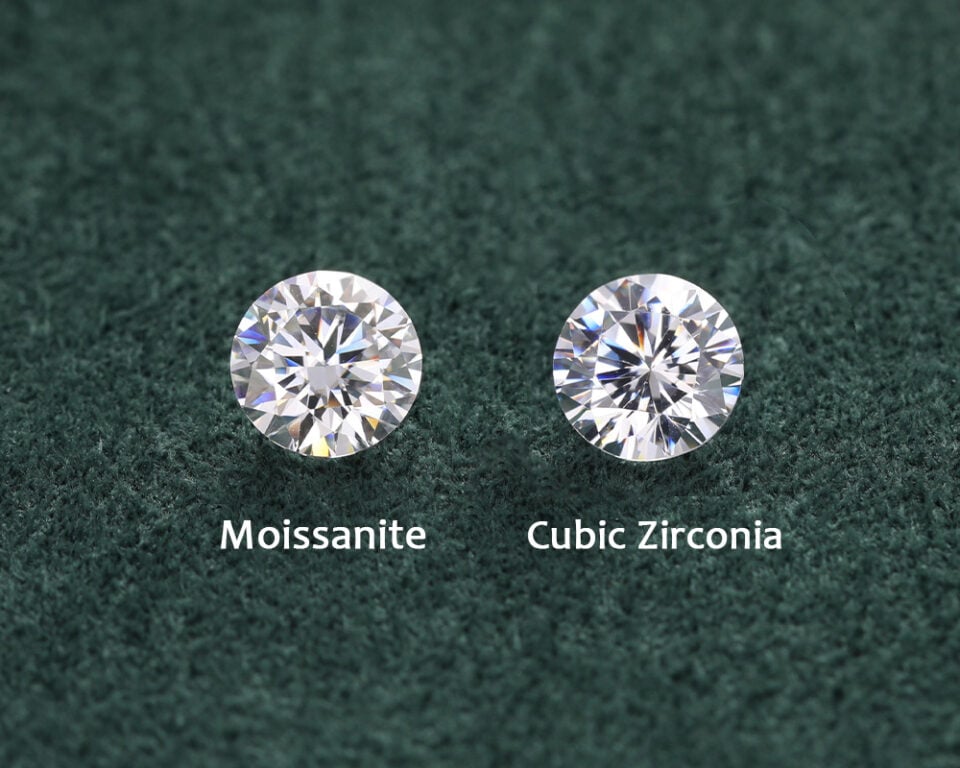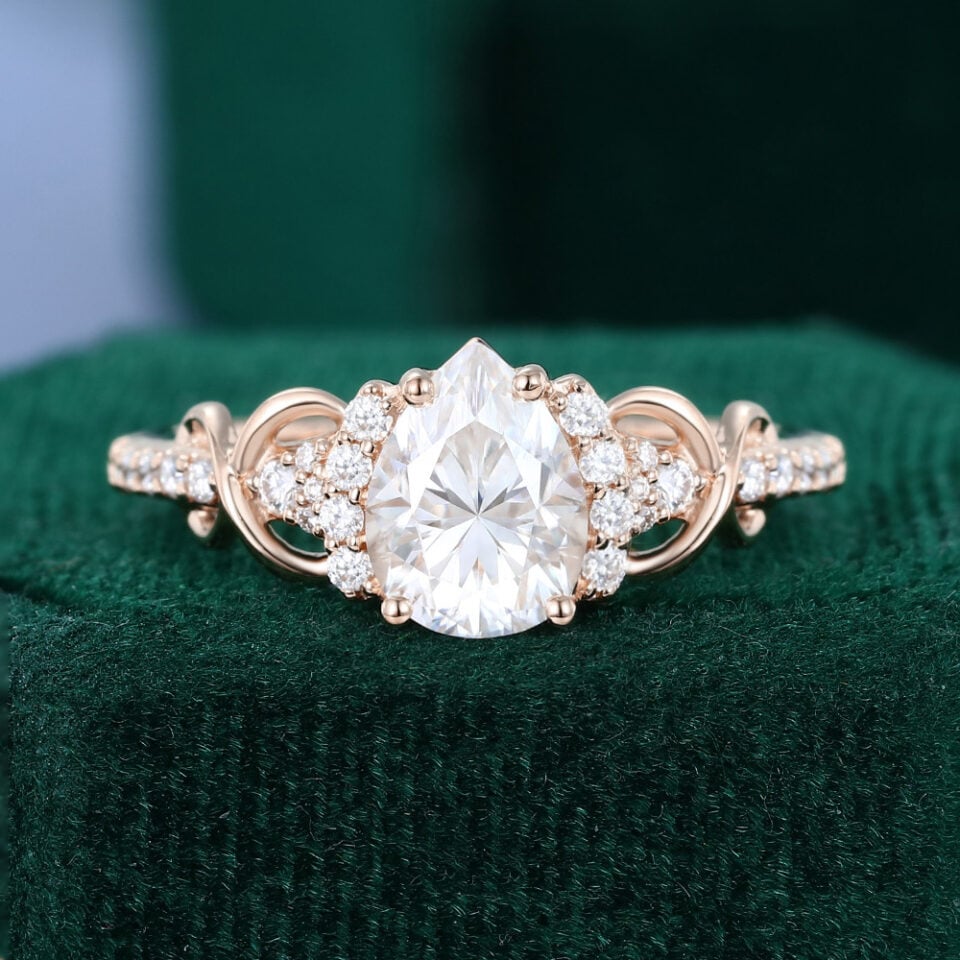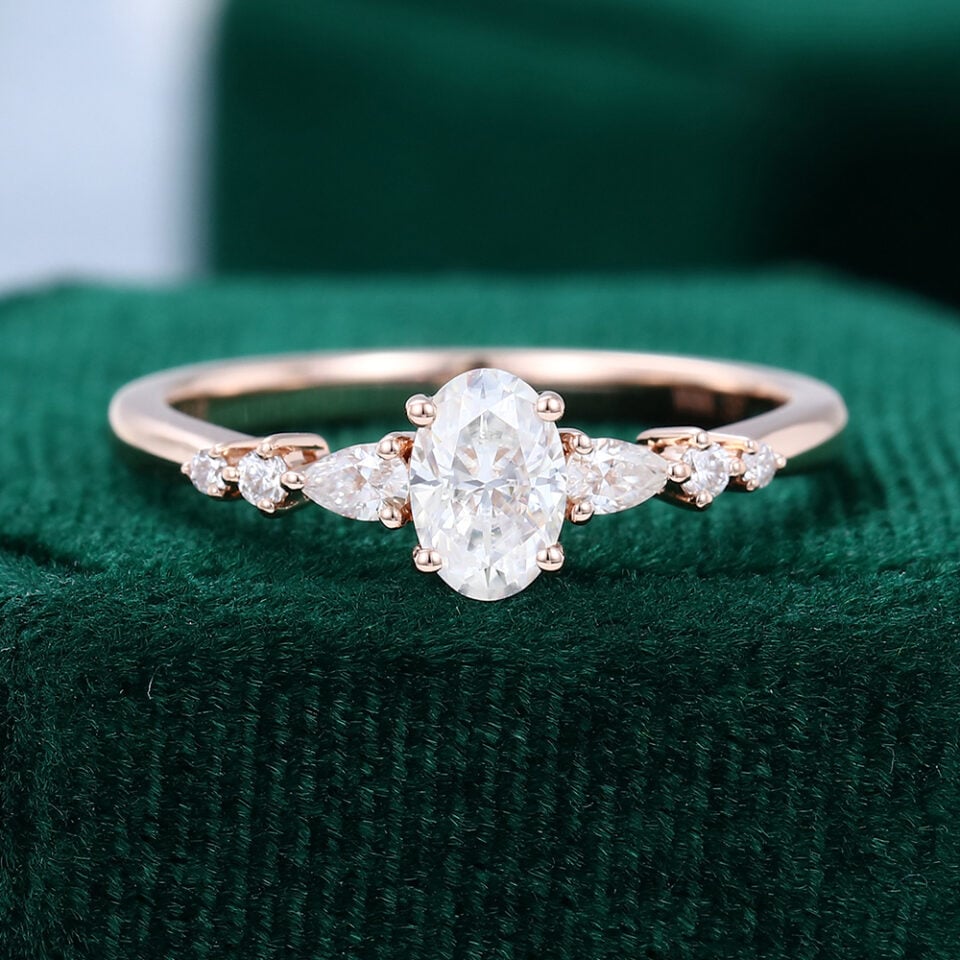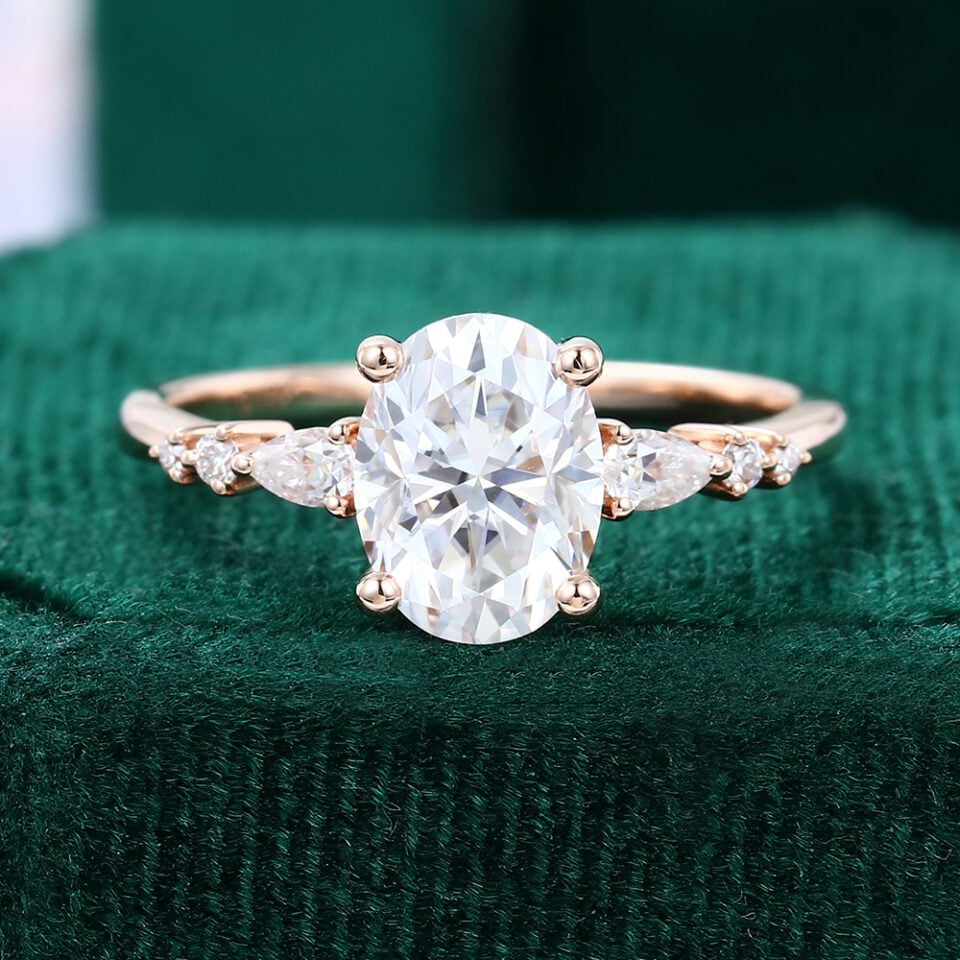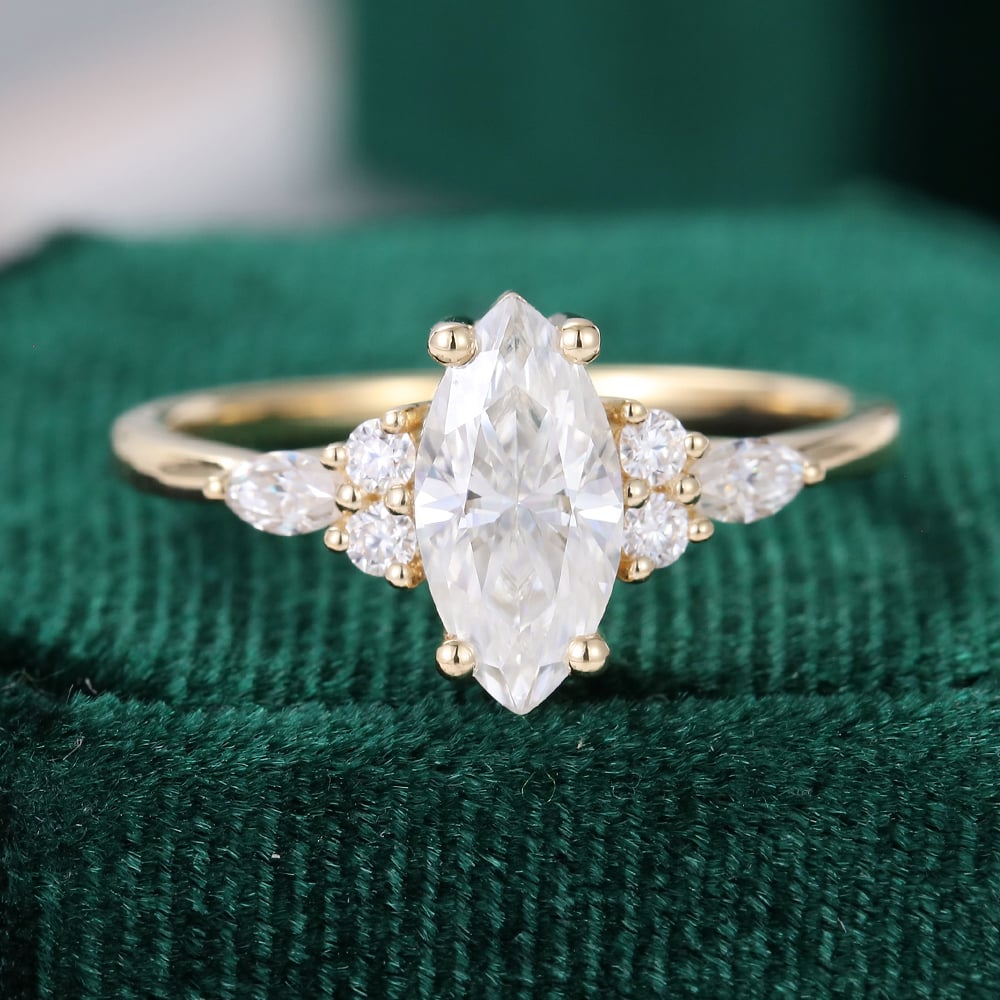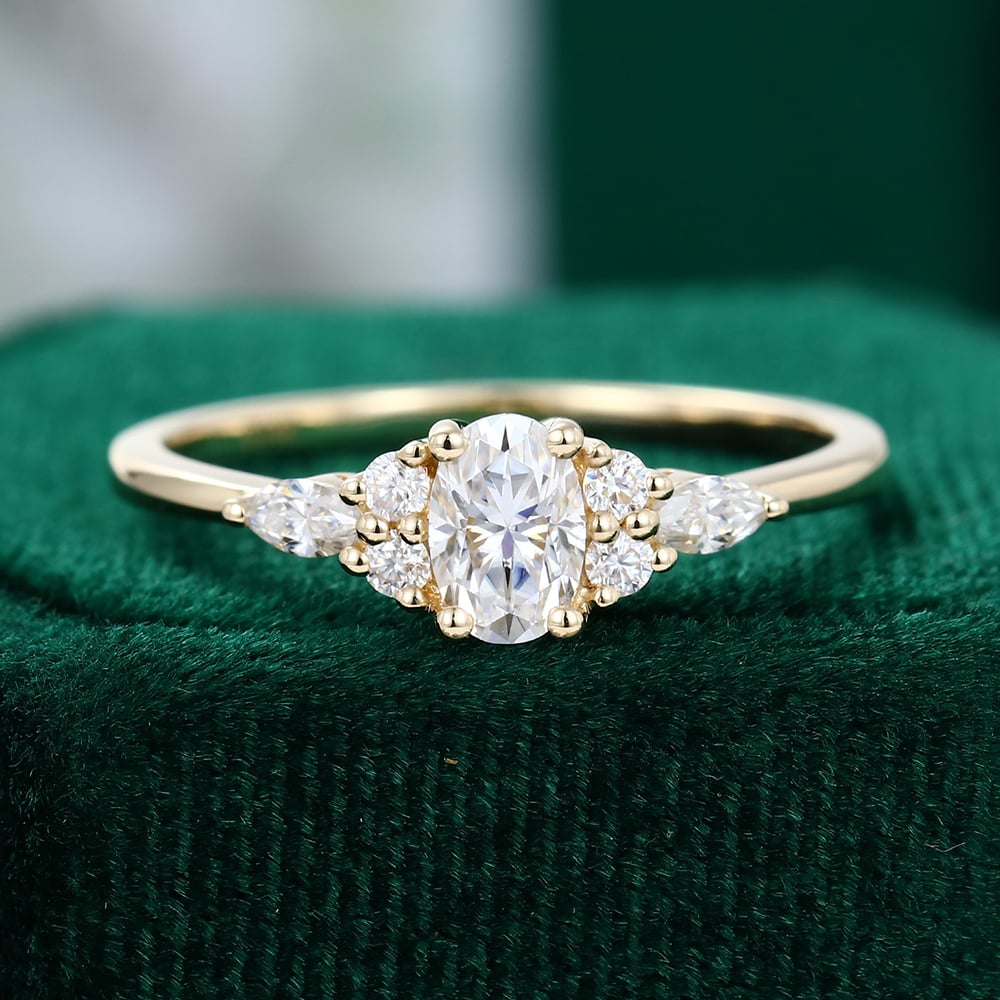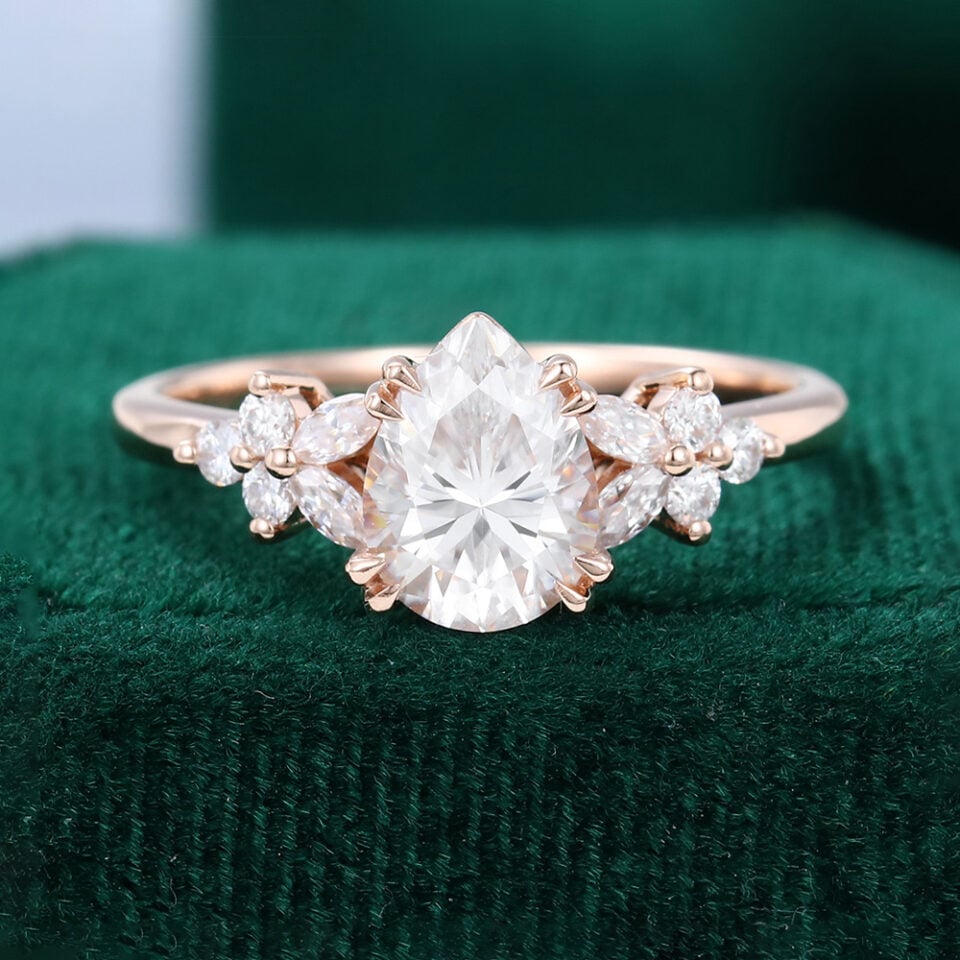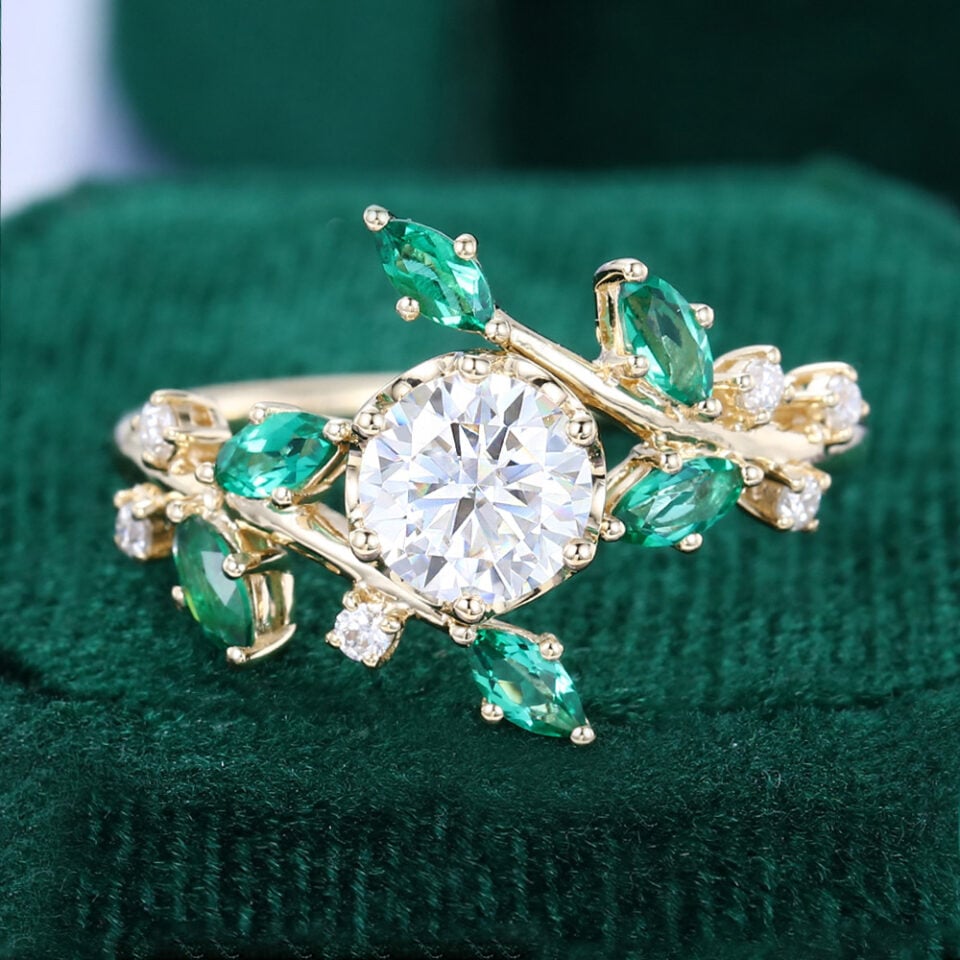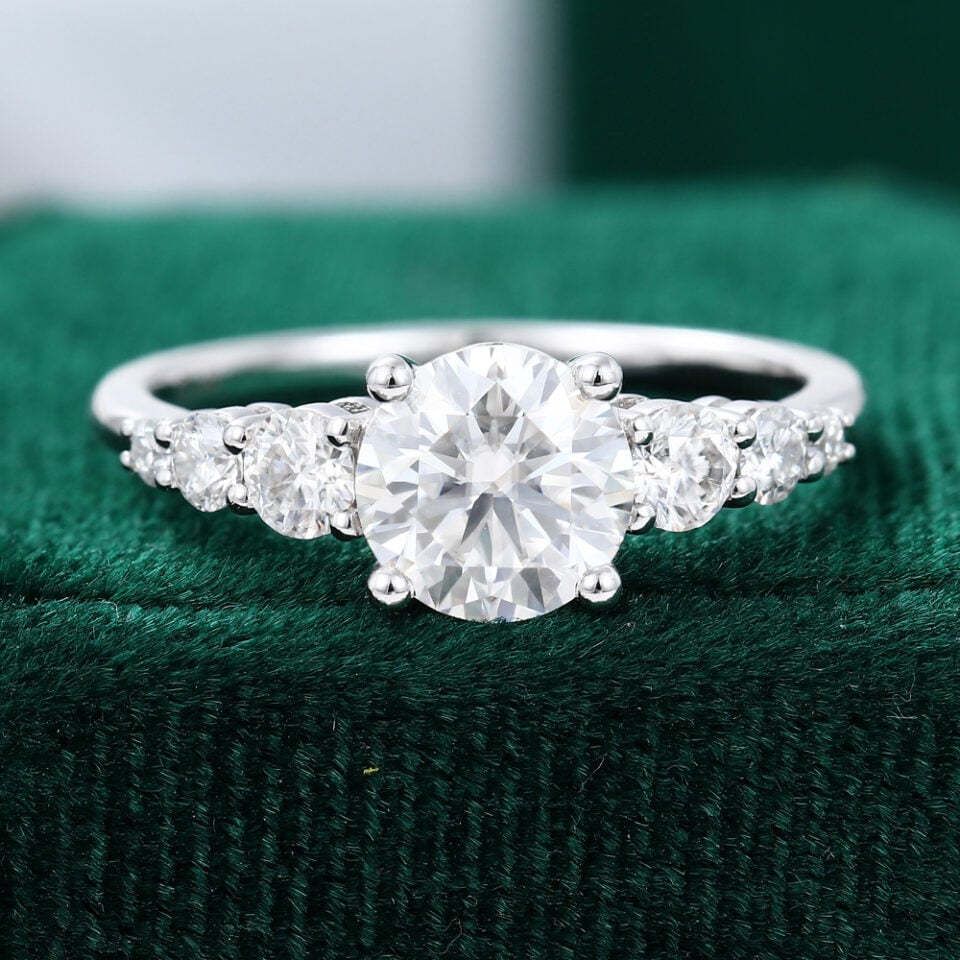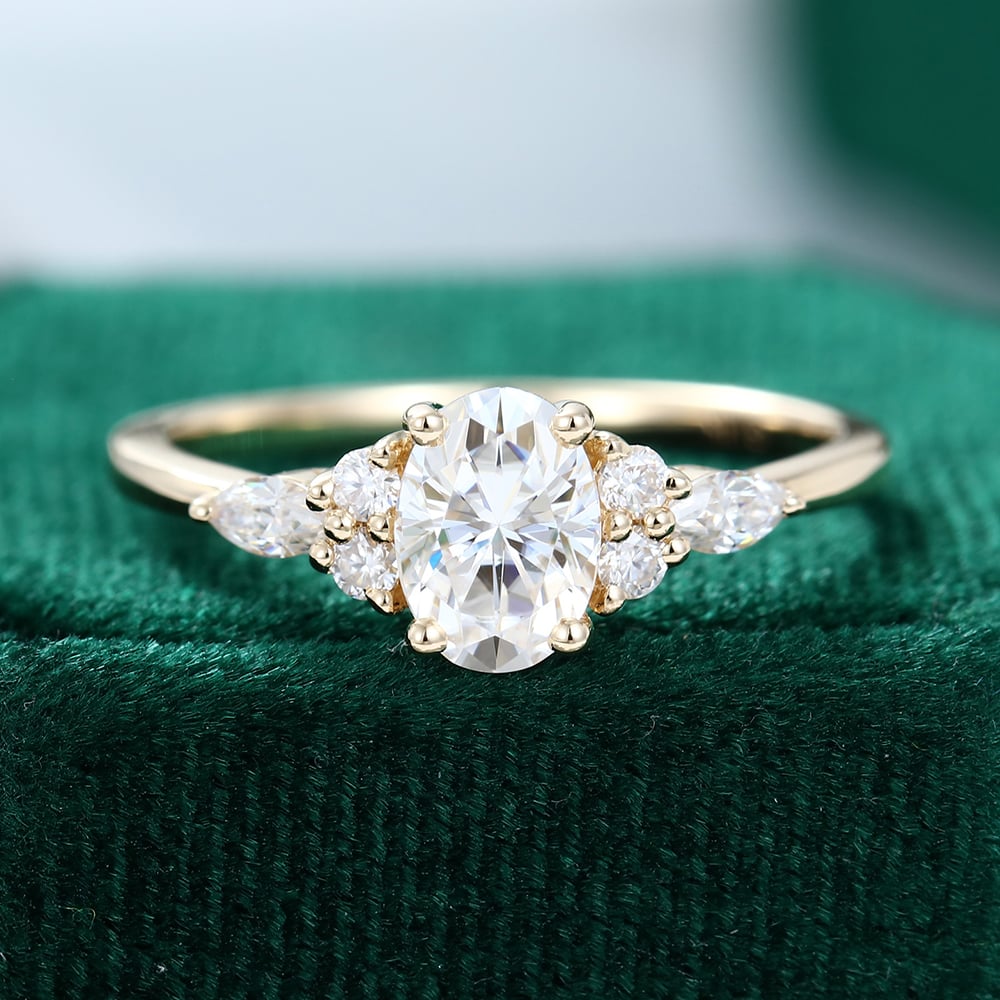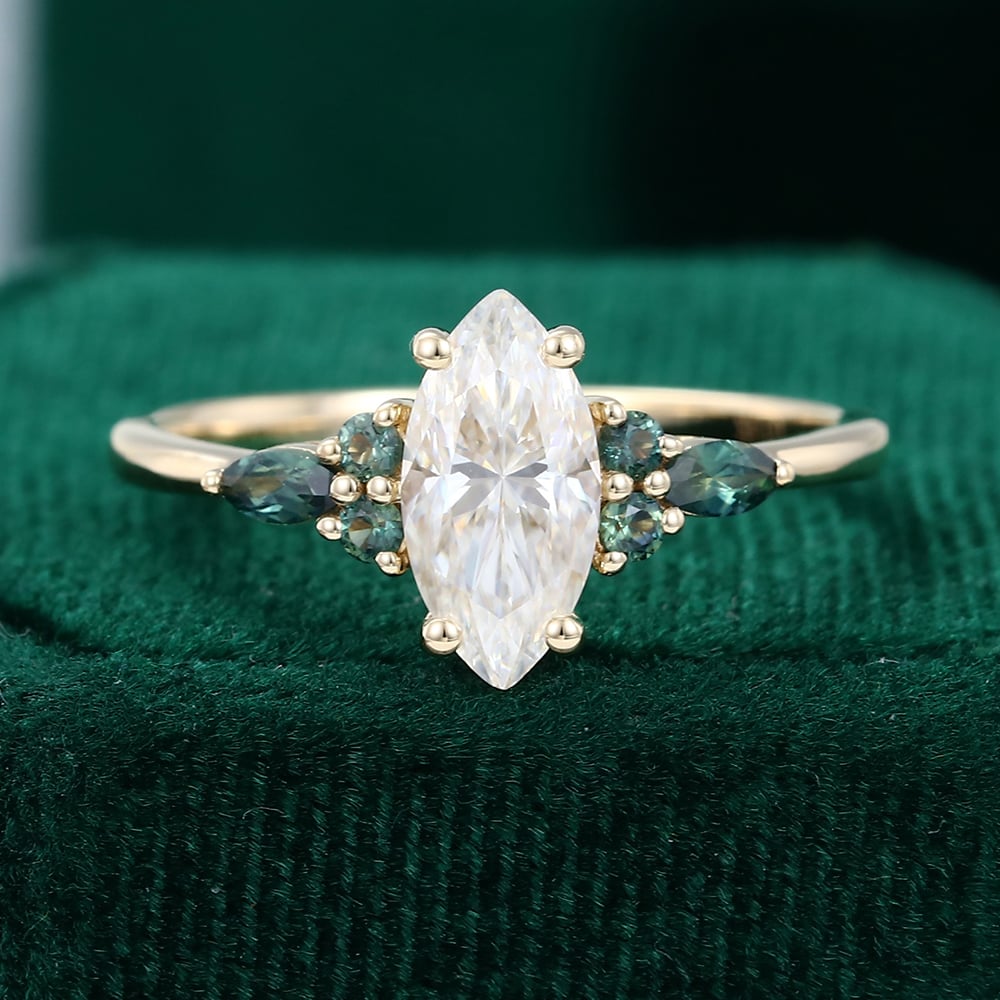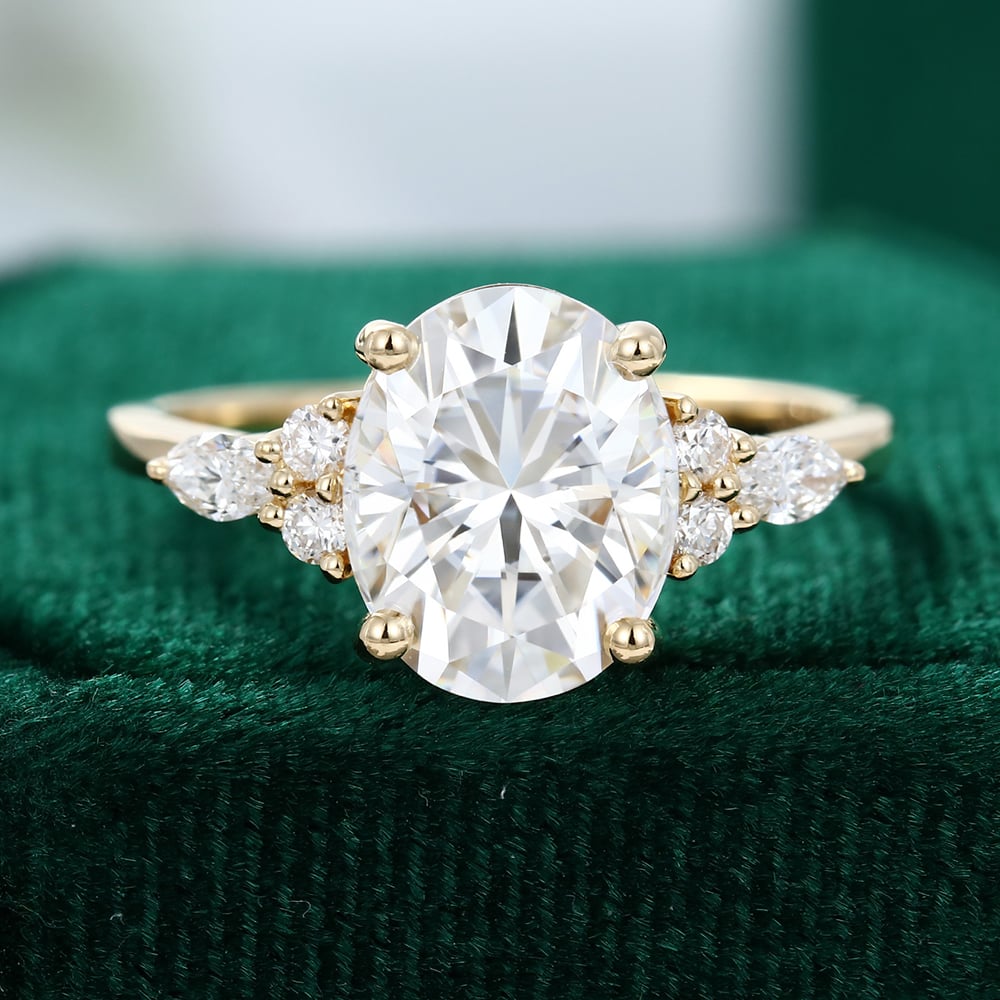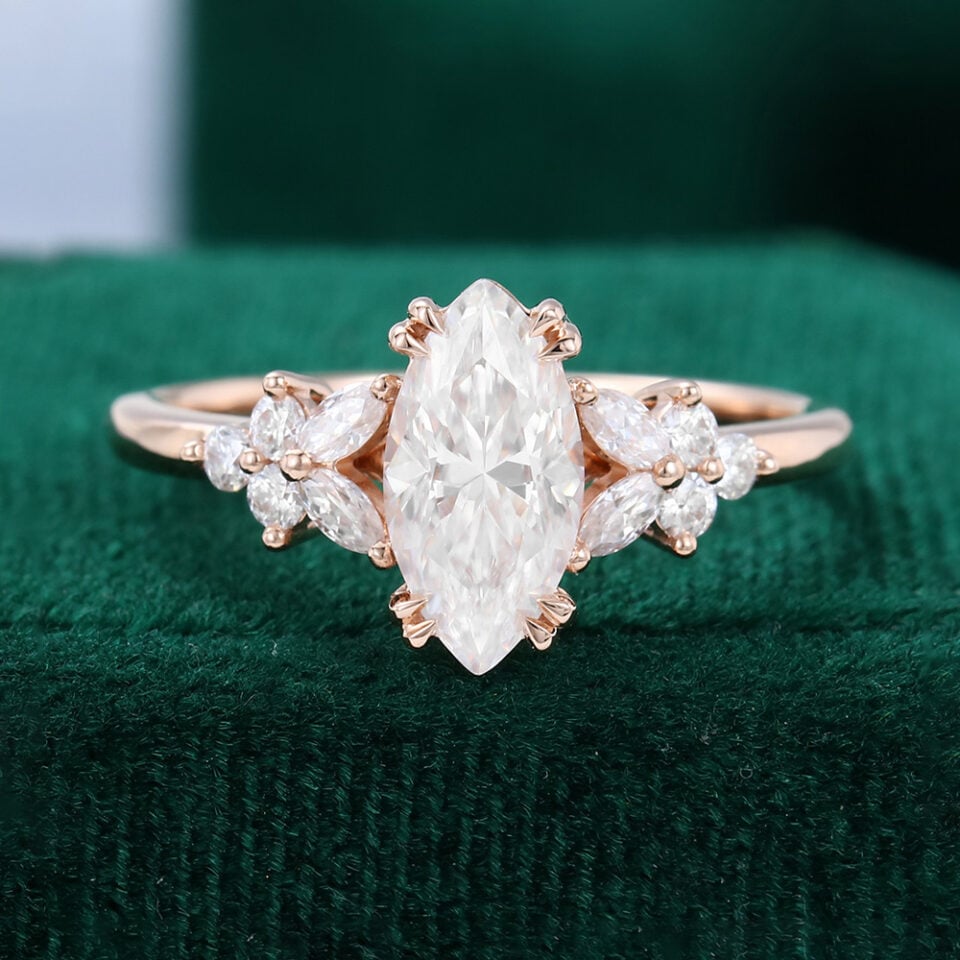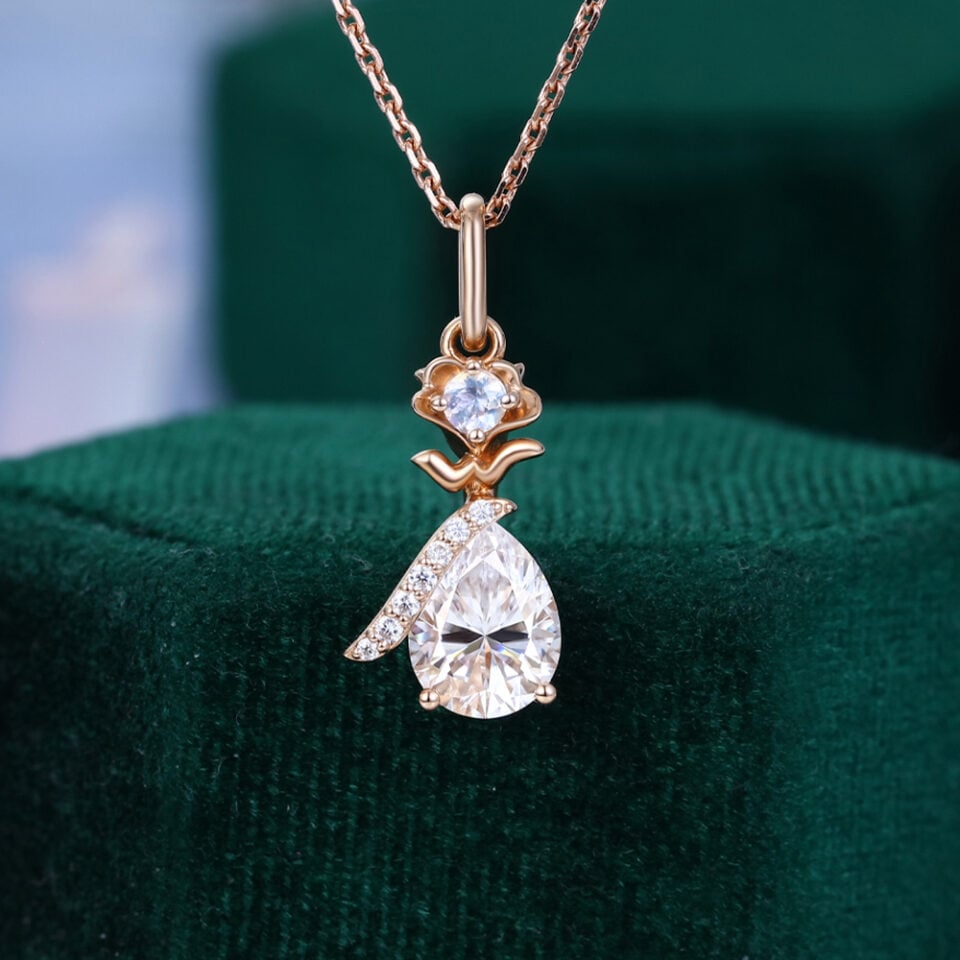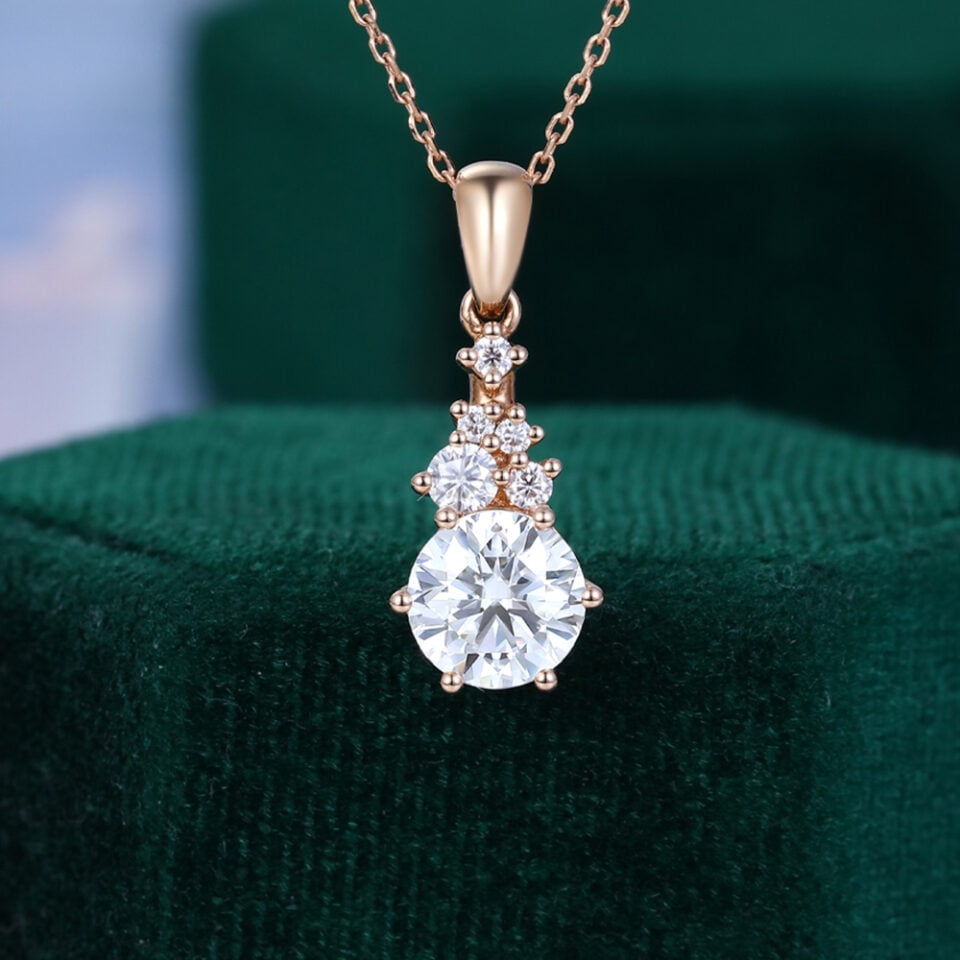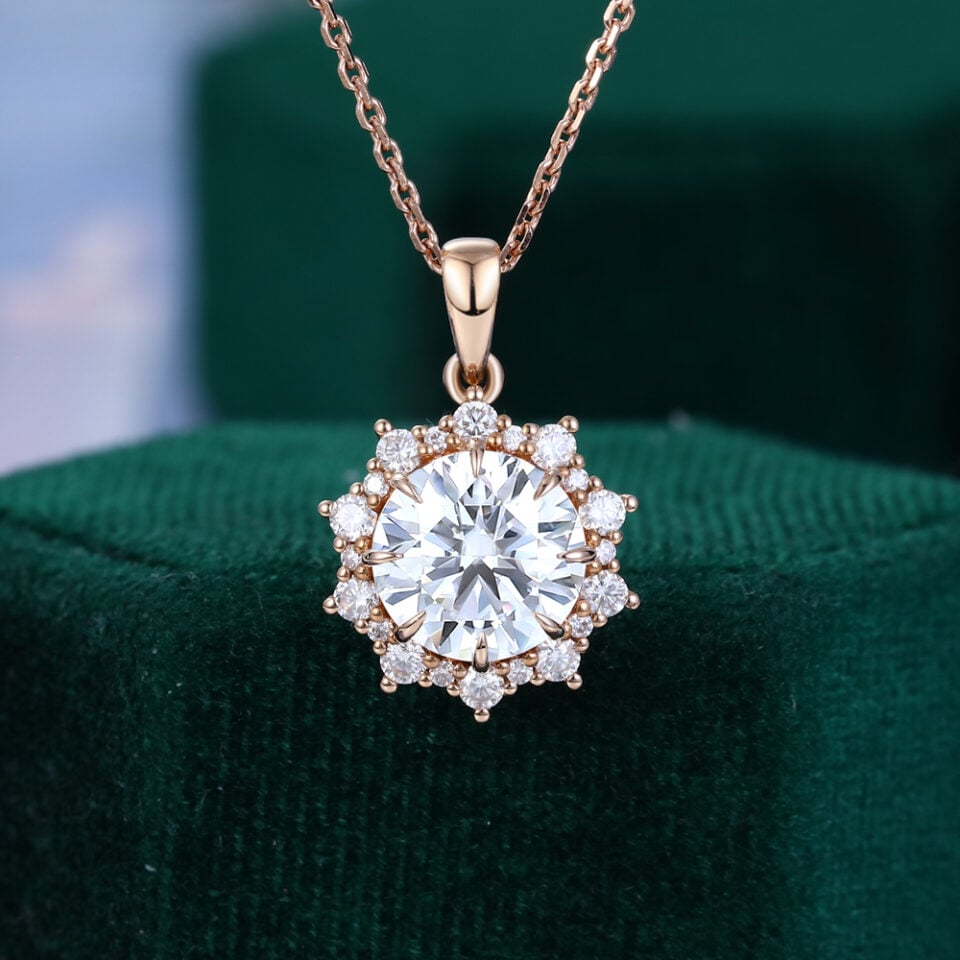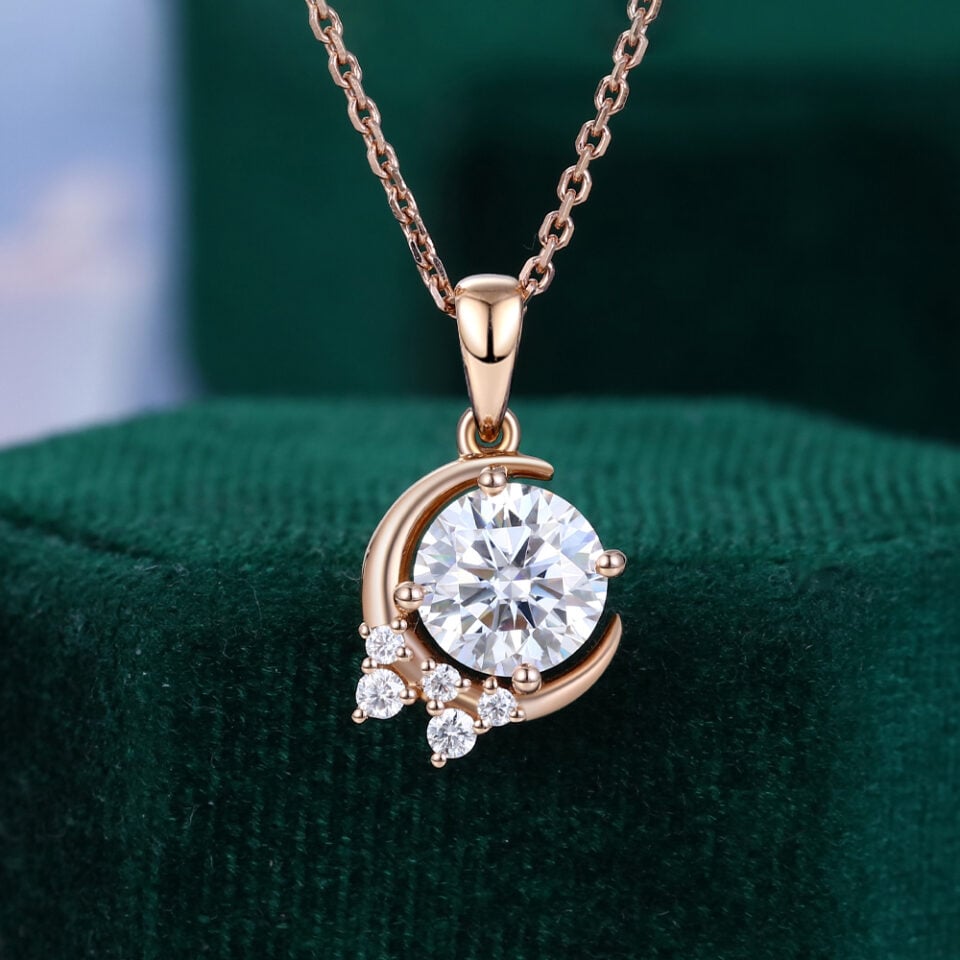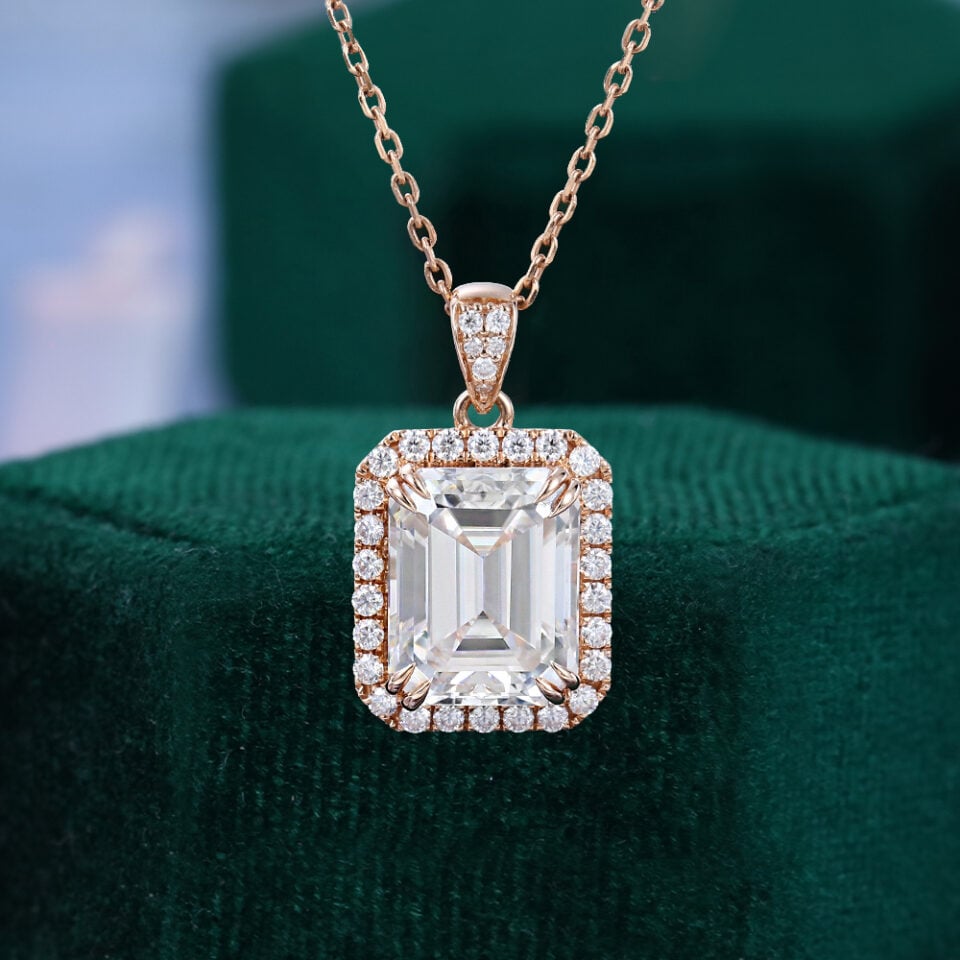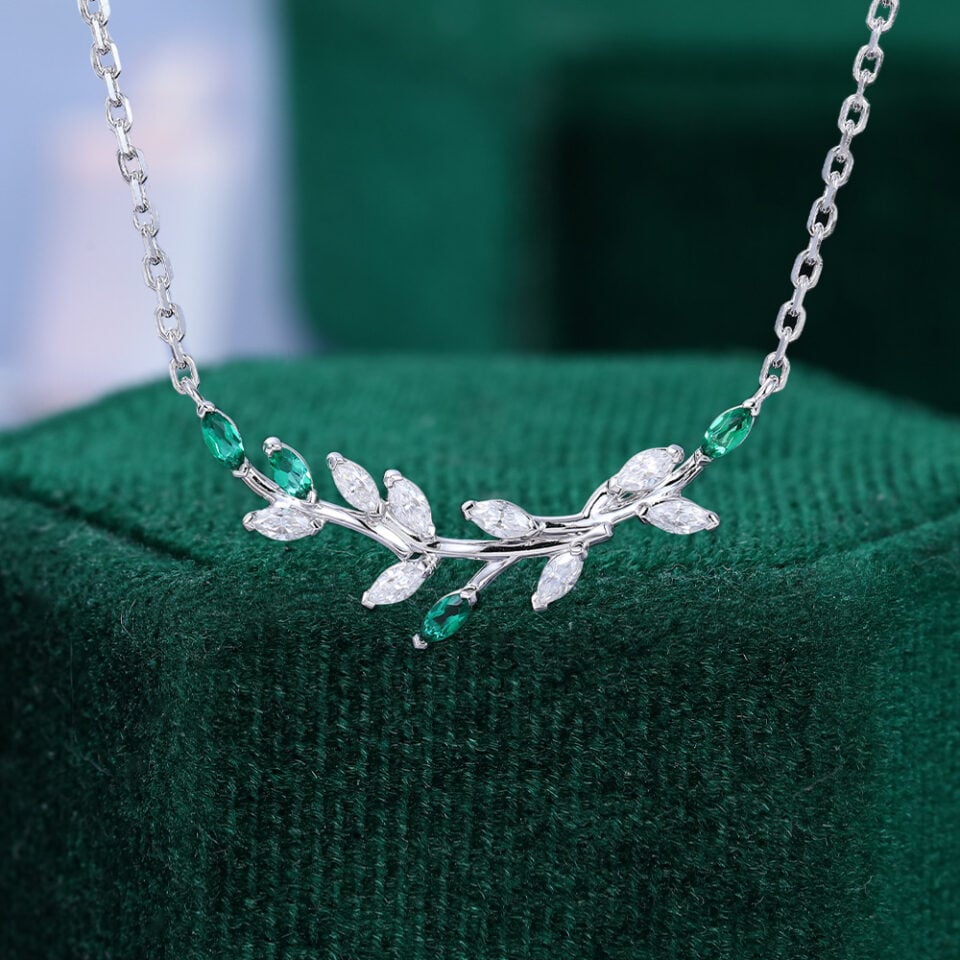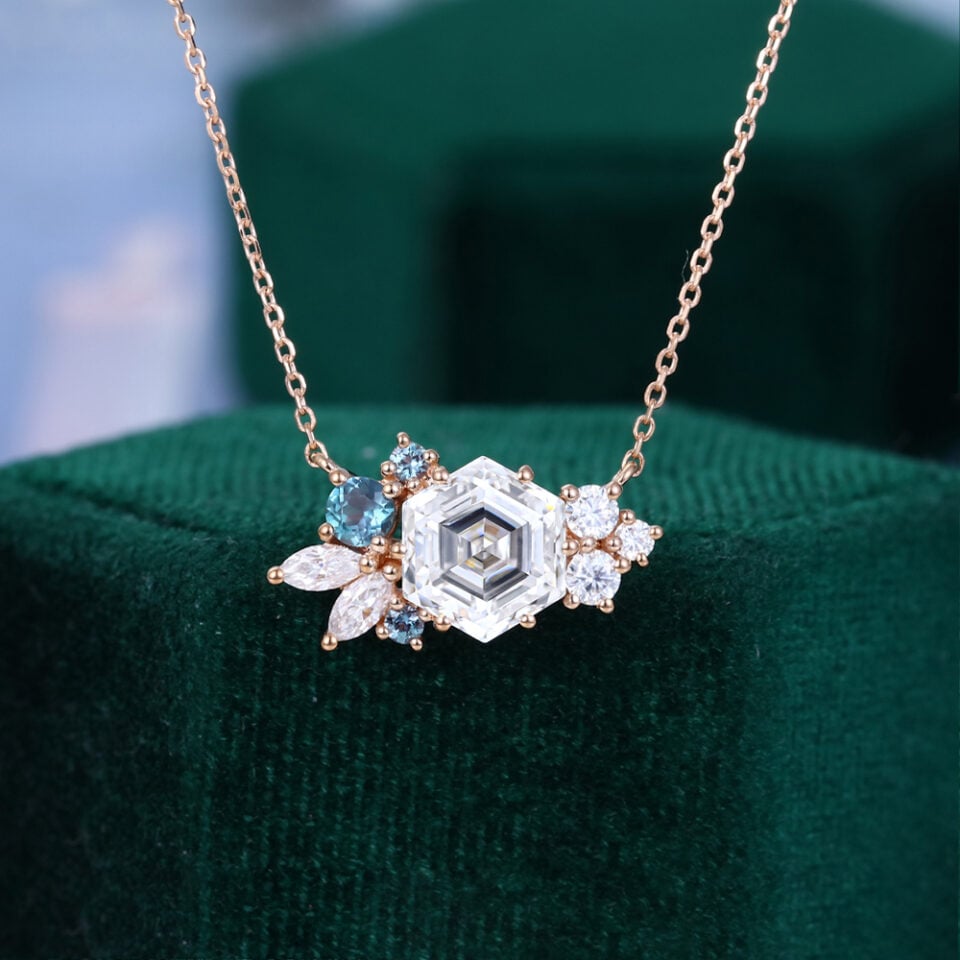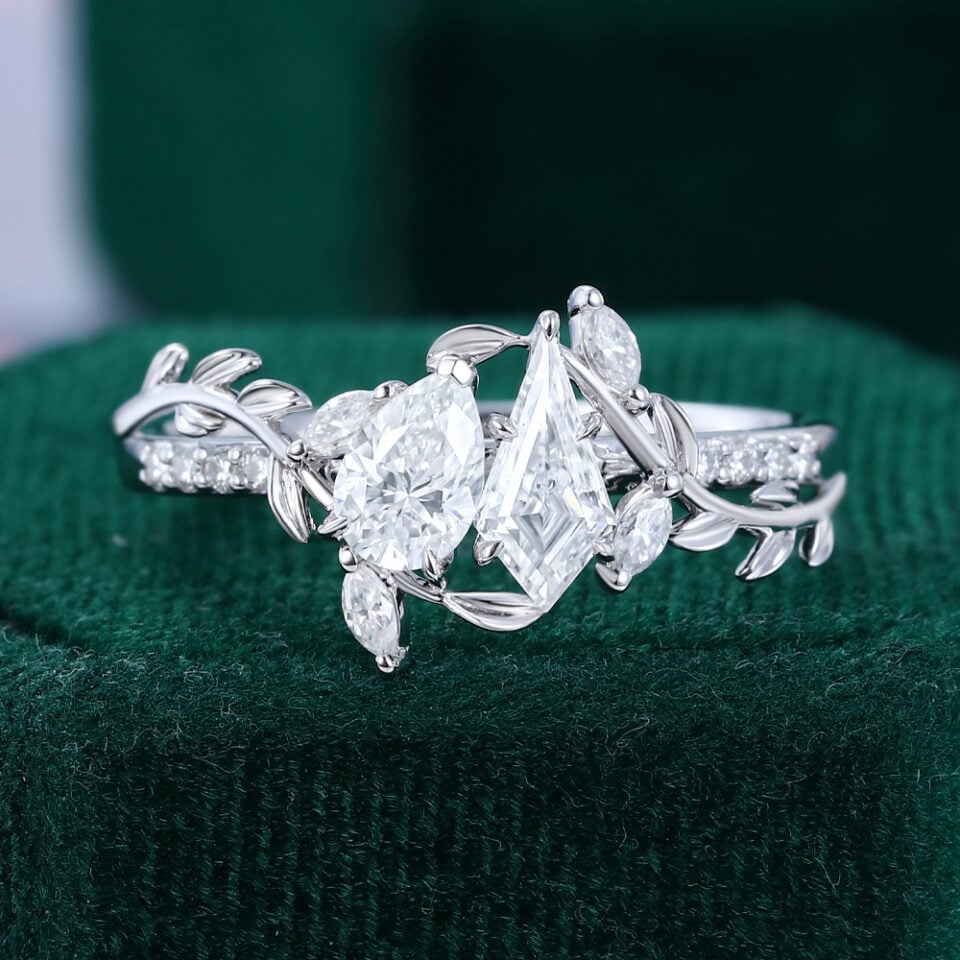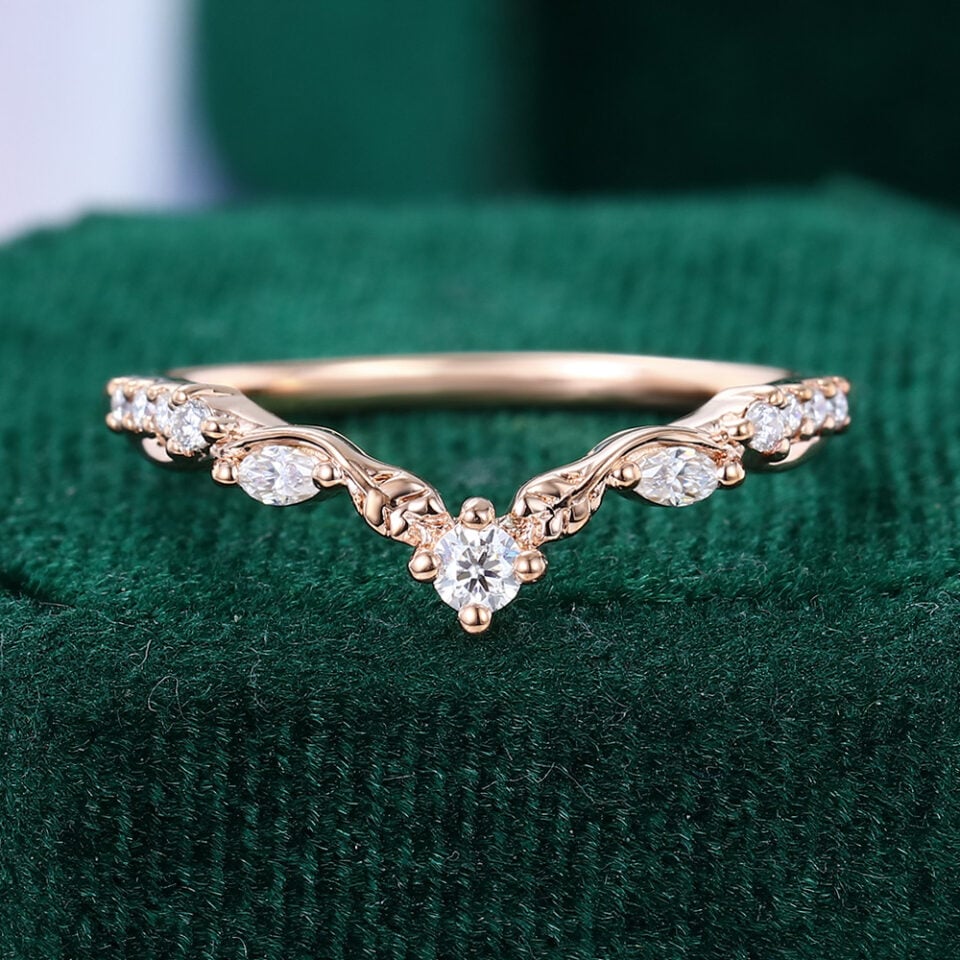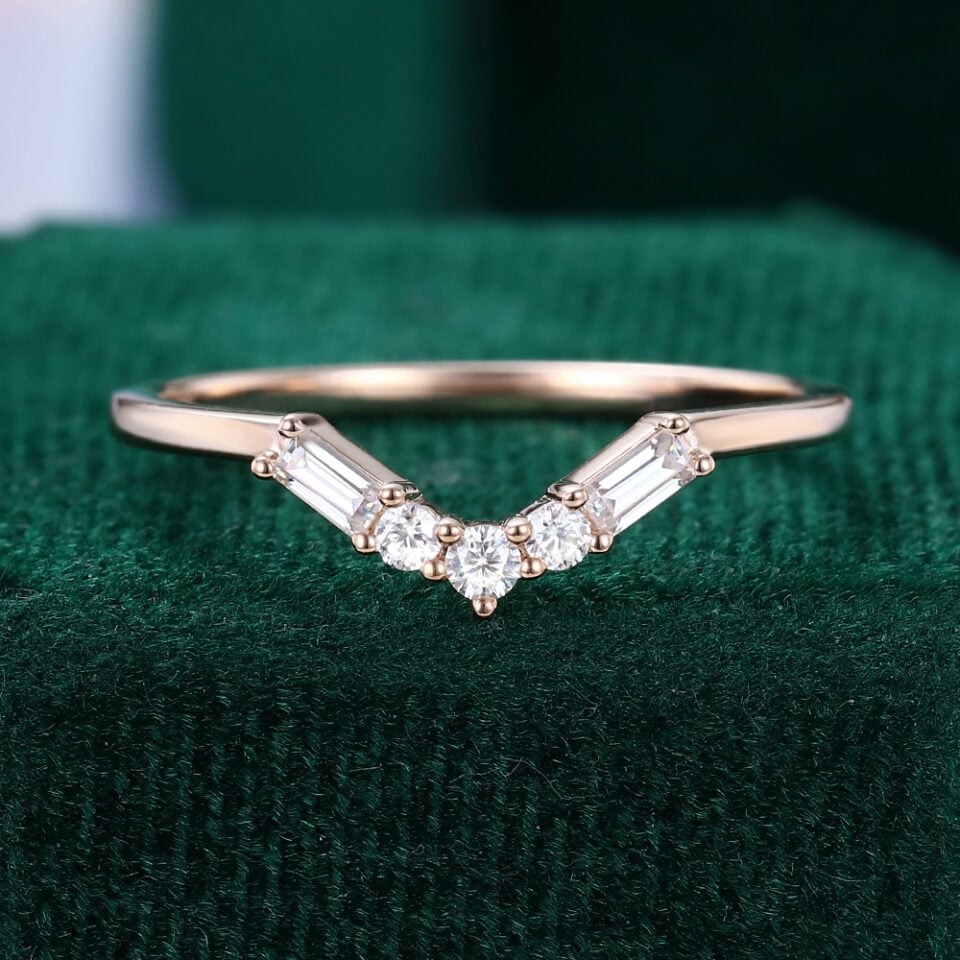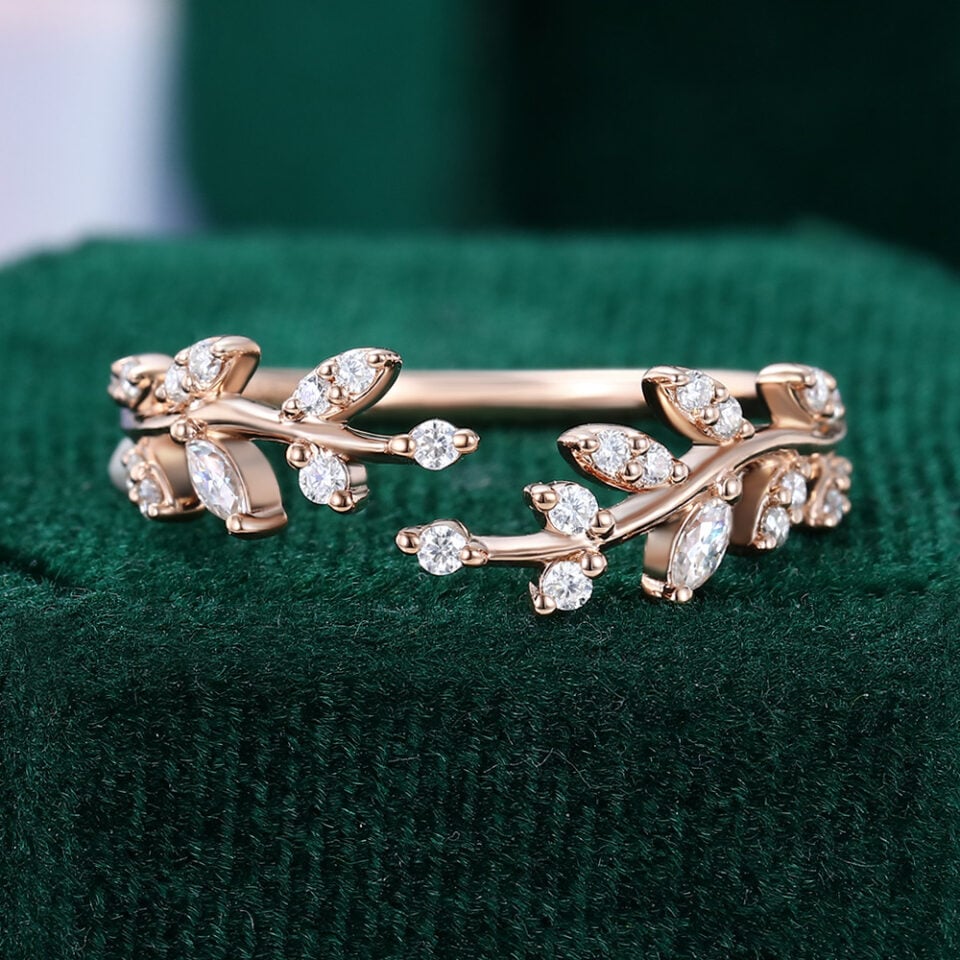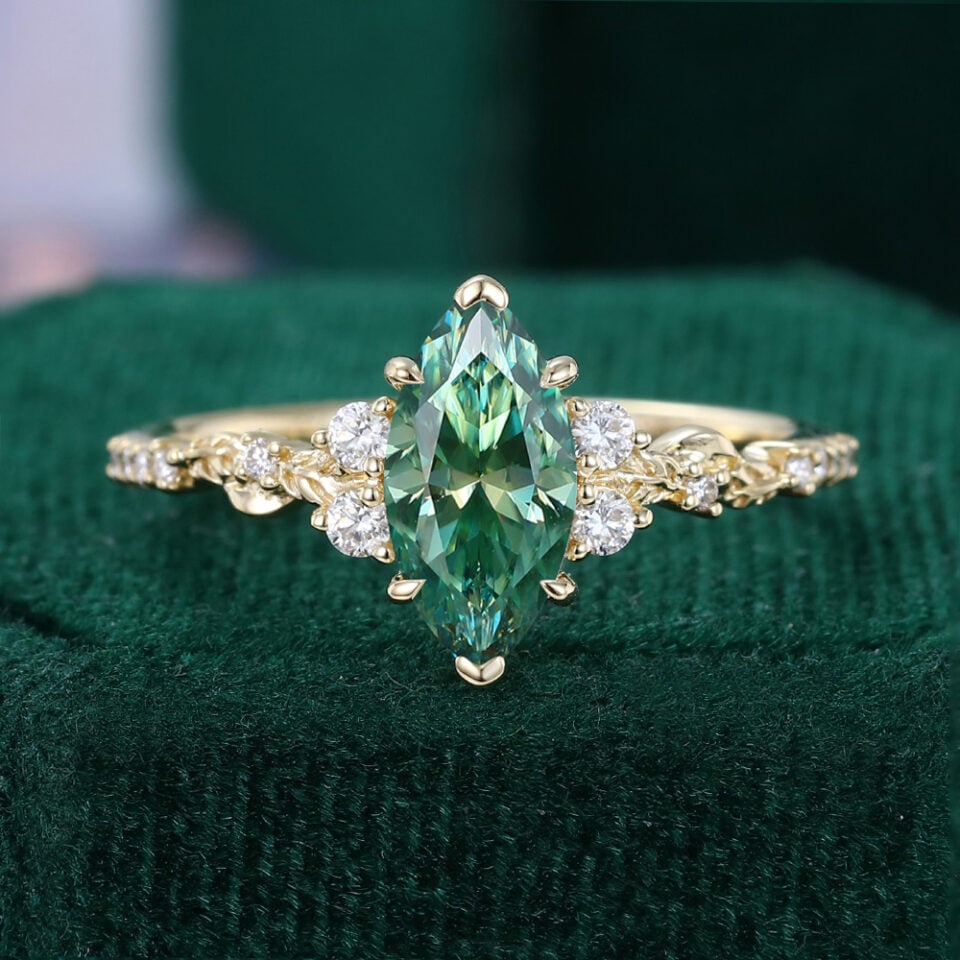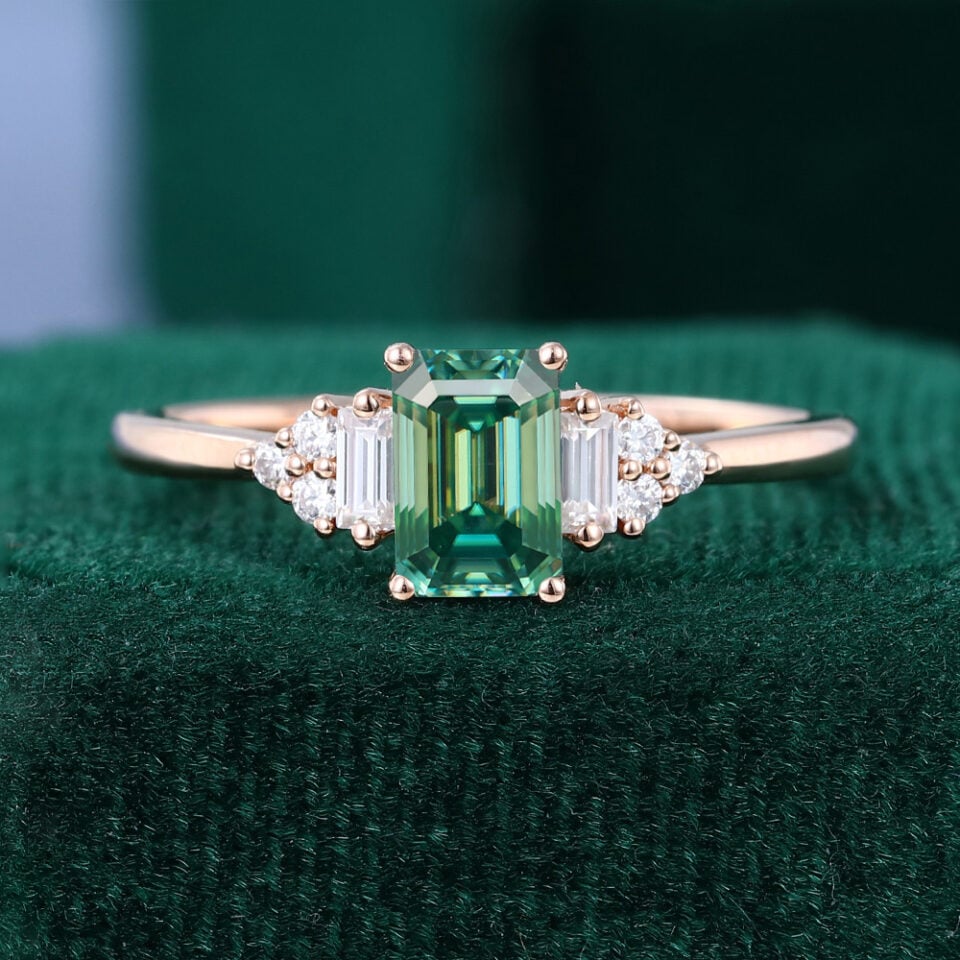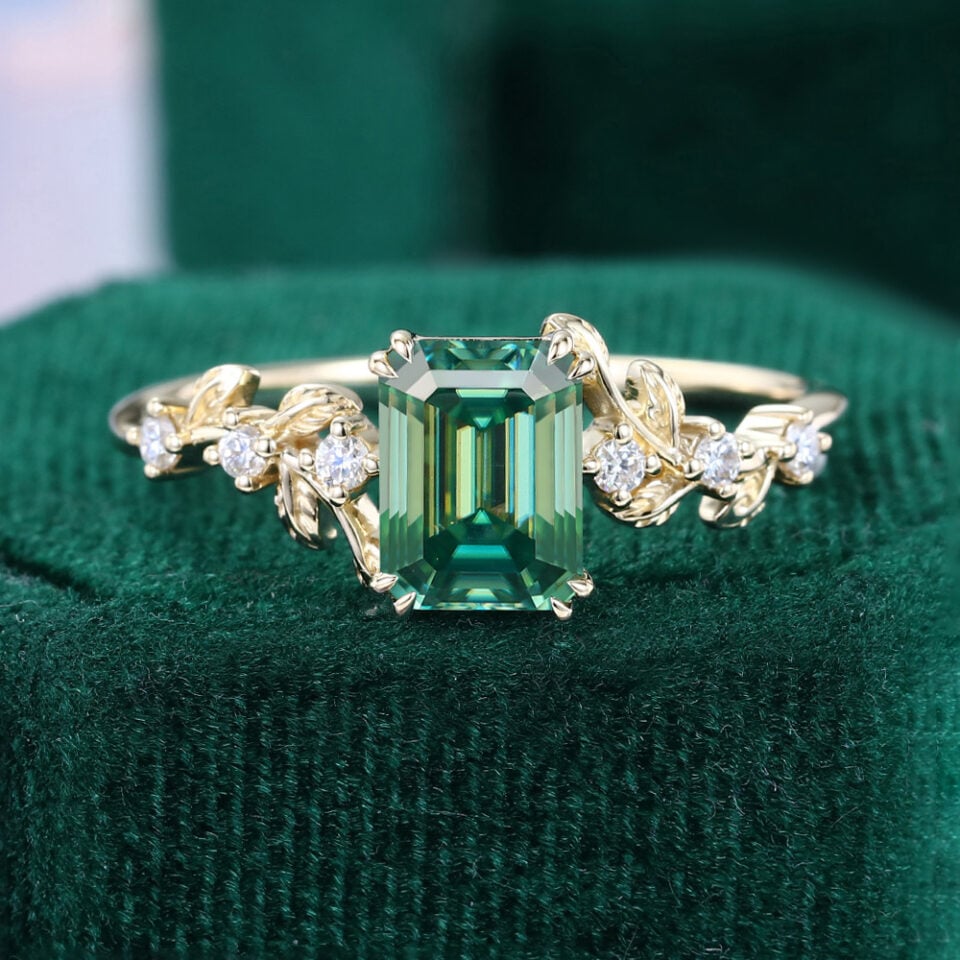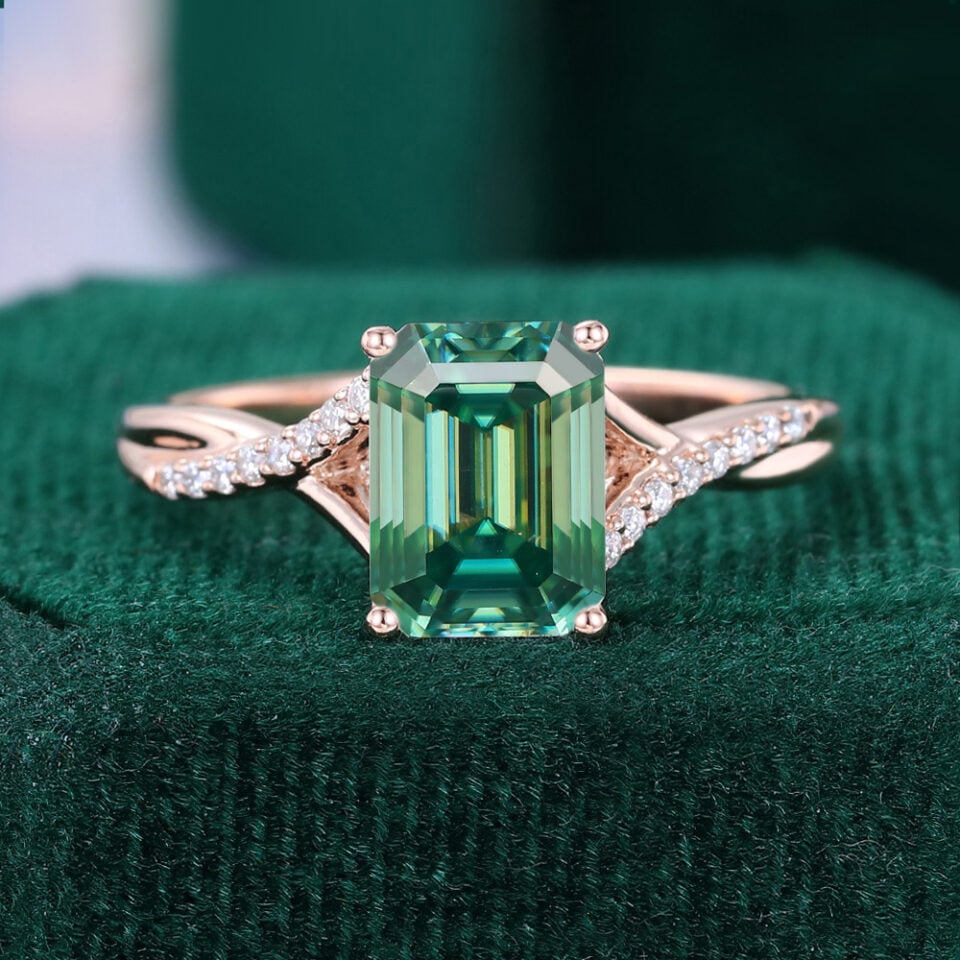- by MollyJewelryUS
- September 30, 2025
- About Moissanite, Gemstone Education
When you’re looking for a budget-friendly alternative to diamonds for an engagement ring or everyday jewelry, moissanite and cubic zirconia (CZ) are often the two most recommended choices. At first glance, they may look quite similar, but they differ in composition, hardness, brilliance, and price. Let’s take a closer look at the key differences between moissanite and cubic zirconia.
If you’re trying to decide between a cubic zirconia and a moissanite engagement ring, this guide covers everything you need to know.
All of our guides are carefully researched and reviewed by our certified gemologists, content team, editors, and brand specialists to ensure accuracy.
Table Of Contents:
- What Are Moissanite and Cubic Zirconia?
- Key Differences Between Moissanite and Cubic Zirconia
- How to Tell Moissanite from CZ Without Professional Tools
- Common Misconceptions
- Which One Should You Choose?
- Moissanite vs. CZ FAQs
What Are Moissanite and Cubic Zirconia?
Moissanite has a cosmic origin story—it was first discovered in a meteor crater in 1893. In its natural form, moissanite is silicon carbide, a compound known for its strong and simple structure. However, natural moissanite is extremely rare, which is why all moissanite used in jewelry today is lab-created. Thanks to advanced technology, lab-grown moissanite offers exceptional brilliance, durability, and ethical sourcing, making it one of the most sought-after diamond alternatives. View Moissanite Guide for more details.
Cubic zirconia (CZ), on the other hand, is a synthetic material made from zirconium dioxide. It rose to popularity in the 1970s as an affordable diamond substitute. It’s important to note that natural zirconium dioxide typically occurs in a monoclinic crystal system (which is soft and unsuitable for gemstones). To make it usable in jewelry, stabilizers such as yttrium oxide and magnesium oxide must be added during the synthesis process, transforming it into a cubic crystal structure with the necessary hardness and transparency. (However, the presence of these stabilizers can compromise the material’s purity and long-term chemical stability to some degree.)
Key Differences Between Moissanite and Cubic Zirconia
To give you a clear comparison, we’ve organized their core characteristics in the table below:
| Characteristic | Moissanite | Cubic Zirconia (CZ) |
|---|---|---|
| Composition | SiC | ZrO₂ + stabilizers |
| Mohs Hardness | 9.25 (second only to diamond) | 8–8.5 |
| Toughness | 7.6 PSI | 2.4 PSI |
| Refractive Index | nω = 2.654, nε = 2.967 | 2.15–2.18 |
| Refraction Type | Birefringent | Single refractive |
| Dispersion | 0.104 | 0.060 |
| Density (Weight) | Slightly lighter than diamond (same size) | Slightly heavier than diamond (same size) |
| Price | $300–$600/ct | $20–$50/ct |
Moissanite vs. CZ Durability
When evaluating a gemstone’s durability, it’s not just about hardness—toughness and stability matter too.
- Scratch Resistance (Mohs Hardness): Moissanite ranks 9.25 on the Mohs scale, higher than cubic zirconia at 8–8.5, which means moissanite is more resistant to scratches.
- Resistance to Breaking and Chipping (Toughness): Moissanite has a toughness of 7.6 PSI, compared to CZ at only 2.4 PSI. In other words, moissanite is over 300% tougher than cubic zirconia.
- Heat Stability: Moissanite withstands high temperatures and won’t shatter during resizing or jewelry repairs that involve heat. CZ, however, is highly heat-sensitive. Exposure to high temperatures can cause CZ to crack or turn cloudy white on the surface—damage that cannot be reversed.
- Chemical Stability: Moissanite is chemically inert and stable. In contrast, cubic zirconia is less stable and reacts with carbon dioxide (CO₂) and moisture in the environment, which makes it prone to attracting fingerprints and oils.
Overall, for long-term wear, moissanite is significantly more durable than cubic zirconia.
Moissanite vs. CZ Optical Performance
Optical properties determine how beautiful a gemstone looks—mainly its brilliance (refractive index) and fire (dispersion). Cutting style can further enhance or reduce these features.
- Brilliance (Refractive Index): The higher the refractive index, the more light is reflected inside the stone, creating stronger sparkle. Moissanite has a refractive index of up to 2.967, which is about 37% higher than CZ (2.15–2.18). This allows moissanite to stay bright and lively even in low-light environments like restaurants or cars. CZ’s lower refractive index makes it more prone to “light leakage” (light escaping through the pavilion facets instead of reflecting back through the crown), causing it to look dull in dim settings.
- Fire (Dispersion): A higher dispersion value means more vivid flashes of rainbow-like color. Moissanite’s dispersion (0.104) is 73% higher than CZ (0.060), creating a striking “rainbow fire” effect when the stone moves. CZ, on the other hand, has softer fire that more closely resembles the subtle, understated sparkle of a diamond—ideal for those who prefer a low-key look.
Note: Beyond a gemstone’s natural properties, the quality of the cut plays a major role in how much brilliance and fire it displays. A well-cut stone is key to maximum sparkle.
Popular Moissanite Engagement Rings
Popular Moissanite Engagement Rings
Moissanite vs. CZ Price and Value
For most buyers, price is often the deciding factor.
- Moissanite: More expensive than cubic zirconia, but still far more affordable than diamonds. A 1-carat moissanite typically ranges from $300 to $600, depending on the cut and quality.
- Cubic Zirconia: Extremely affordable, with a 1-carat CZ usually priced at $20 to $50.
While CZ has a much lower upfront cost, moissanite offers greater long-term and resale value. CZ has virtually no resale value, whereas moissanite typically retains about 50%–70% of its original price. For this reason, moissanite is considered a better investment. If you’re only looking for short-term or “disposable” jewelry, however, CZ can be a practical choice.
Moissanite vs. CZ Ethical and Environmental Considerations
Both moissanite and cubic zirconia are lab-created, which means they are conflict-free and avoid the environmental damage associated with diamond mining.
- Moissanite: The lab-growing process requires precise control of temperature and pressure. Many brands now rely on clean energy sources such as solar or wind power. Each crystal takes about 2–3 months to grow, allowing for controlled production and relatively low carbon emissions.
- Cubic Zirconia: Its synthesis process is simpler and often mass-produced, with a single production line capable of yielding thousands of stones per day. However, the melting process requires extremely high temperatures (over 1800°C), which consumes significant energy. Smaller manufacturers may not implement eco-friendly practices, resulting in higher overall carbon emissions compared to moissanite.
If low-carbon sustainability is your priority, moissanite is the better option. But if your main concern is simply avoiding conflict mining, both gemstones meet that standard.
Moissanite vs. CZ Care and Maintenance
Ease of care directly affects the wearing experience, and the main differences between moissanite and cubic zirconia lie in cleaning frequency and sensitive conditions:
- Moissanite: Can be easily cleaned with mild soap and warm water. Its hardness makes it resistant to most scratches, so it requires very little special maintenance and infrequent cleaning.
- Cubic Zirconia: Needs to be cleaned more frequently since it easily attracts oils and dust. Over time, scratches will diminish its sparkle, and it can never fully regain its original luster. It’s also sensitive to heat—exposure to high temperatures can cause CZ to turn yellowish or cloudy.
How to Tell Moissanite from CZ Without Professional Tools
If you already have a gemstone in hand, you can use these three simple methods without any specialized equipment:
- Weight Test: Moissanite has a lower density than CZ, meaning a moissanite of the same size will feel lighter.
- Sparkle Test: In natural light, rotate the stone—moissanite will display bold, colorful flashes, while CZ has softer sparkle.
- Magnification Test: Under a 10x loupe, moissanite shows double refraction (a slight doubling or “shadowing” of facets), whereas CZ, being singly refractive, will not.
Moissanite and CZ Common Misconceptions
- “Cubic zirconia and moissanite are basically the same.”
False. While both are considered diamond substitutes, moissanite is a synthetic gemstone with its own natural counterpart, high hardness, and long-term value. CZ, however, is a man-made crystal with no natural equivalent, lower hardness, and only short-term wearability. In terms of durability and value, they are not on the same level at all. - “Cubic zirconia doesn’t change color.”
In reality, CZ has poor chemical stability. With prolonged exposure to sweat and air, its surface gradually becomes cloudy and may even turn yellow, especially after extended sunlight exposure. - “Moissanite looks fake because it’s too sparkly.”
This depends on personal taste. Moissanite’s bold “rainbow fire” is a natural feature—some see it as a unique highlight, while others prefer the softer fire of diamonds. But as moissanite has become more popular, more people appreciate its brilliance. High-quality cuts can also tone down the intensity, making it appear closer to a diamond’s sparkle. - “Neither has any value—it’s a waste of money to buy them.”
False. Moissanite has long-term wearability and some resale value, making it suitable for lifetime jewelry like engagement rings. CZ, while lacking long-term value, is extremely affordable and works well as temporary jewelry—such as for travel (to avoid risking expensive pieces) or for styling with specific outfits. When purchased with intention, CZ is not a waste.
So… Which One Should You Choose?
Your decision depends on your needs, budget, and expectations:
Choose Moissanite if:
- You want a gemstone that lasts a lifetime, perfect for an engagement or wedding ring.
- You want maximum brilliance and fire.
- You’re looking for an ethically sourced and sustainable option.
- You need something durable and low-maintenance.
Choose Cubic Zirconia if:
- You want a very affordable gemstone for temporary or fashion jewelry.
- You need travel jewelry and don’t want to worry about losing it.
- You want a diamond-like look at the lowest possible cost for occasional wear.
At MollyJewelryUS, we love creating all kinds of jewelry with moissanite—not only because of its beauty, but also because of the story it carries. Its dazzling sparkle shines as brightly as the love it represents. Explore our moissanite rings and necklaces, and discover a brilliance that reflects your own.
Moissanite vs. CZ FAQs
Moissanite vs. CZ FAQs
Is moissanite better than cubic zirconia for an engagement ring?
Yes—moissanite is far more durable and retains its sparkle for the long term, making it a better choice for lifelong jewelry.
Can yellowed CZ be fixed?
No. Yellowing in CZ results from surface chemical reactions and structural changes, which cannot be reversed by cleaning or polishing. Once CZ turns yellow, it must be replaced.
Does moissanite sparkle more than diamond?
Yes. Moissanite has a higher refractive index (2.967) than diamond (2.417), giving it greater brilliance. Its dispersion value (0.104) is also higher than diamond (0.044), creating stronger rainbow fire. In most lighting conditions, moissanite outshines diamonds.
Can jewelers tell the difference between moissanite and CZ?
Absolutely. Jewelers can use specialized tools to identify each stone. Even without tools, an experienced jeweler can often tell by comparing weight and sparkle.
Is moissanite a “real” gemstone?
Yes—moissanite is a naturally occurring mineral. While all gem-quality moissanite used in jewelry today is lab-created, it is still recognized as a genuine gemstone.
Read More
Read More
